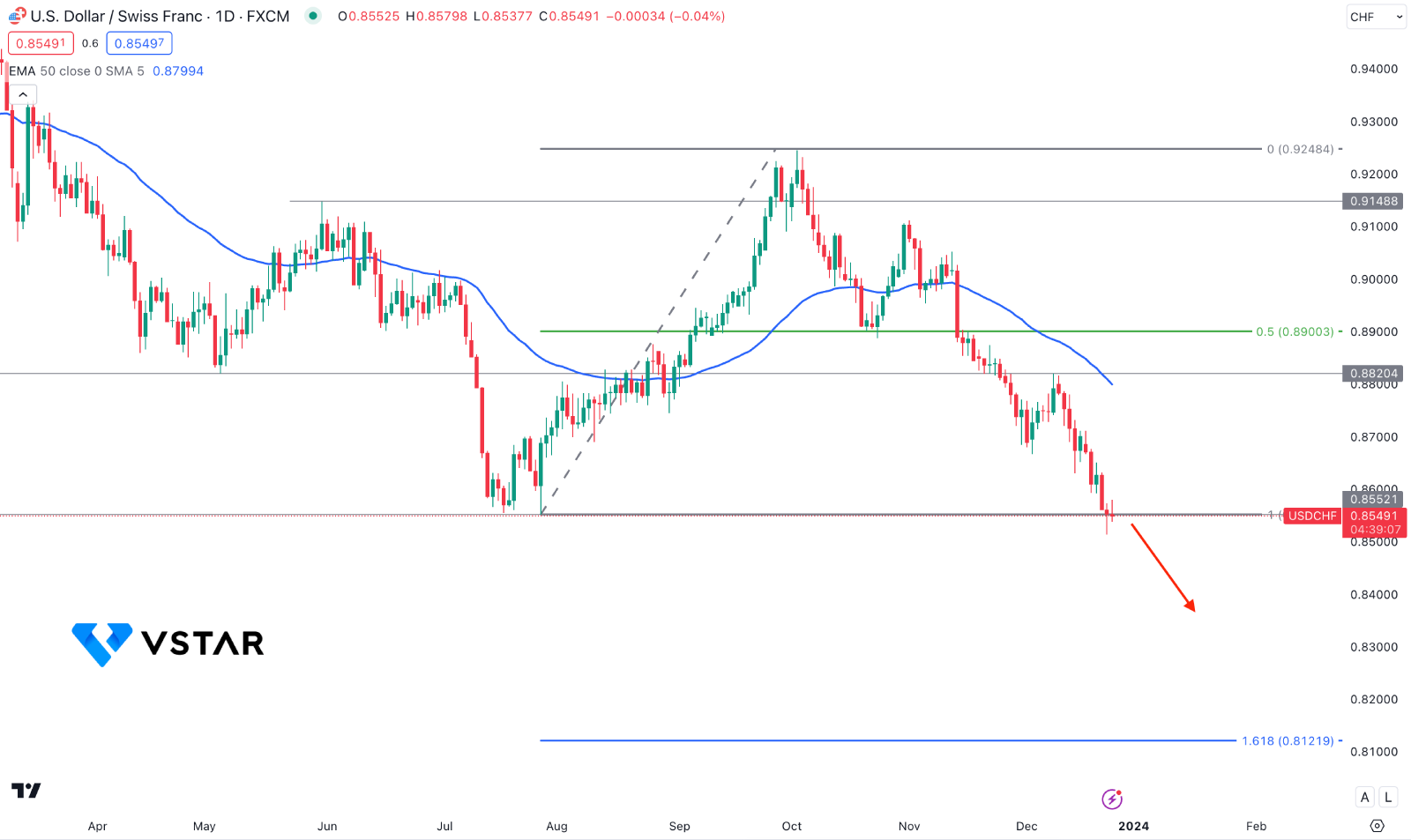The Swiss Franc surpassed nine-year highs against the US Dollar on Friday, accumulating year-to-date gains of over 8% and 6.2%, respectively.
Spread On CHF and US Treasury Yields Have Widened
Since the start of the year, the Swiss Franc has established itself as the most robust currency, undergoing significant appreciation in recent months. Its resilience is bolstered by declining yields in the United States and the eurozone. From its zenith in early October, the spread between Swiss and US 10-year yields decreased by 0.6 percentage points to 3.17%, while the spread between the Eurozone and Switzerland decreased by 0.53 percentage points to 1.2. The decrease in yields has bolstered the comparative appeal of debt instruments issued in Switzerland.
The reduction in yield spreads can be ascribed to the anticipation that Switzerland will emphasize reducing interest rates less than the Federal Reserve or European Central Bank. Notwithstanding this, it is prudent to exercise prudence with respect to the potential for additional franc appreciation.
Since 1999, the present yield spread of 3.2 percentage points remains above its all-time high, while the reversal from 1997 was approaching 3.34 percentage points. Consequently, the yield differential between Swiss and American bonds has historically favored the latter.
SNB Remained Conservative On Dovish FOMC
An additional element impeding the expansion of the franc is Switzerland's discontent with the dynamics of its exchange rate. Consumer inflation decreased to 1.4% annually in November, whereas producer prices decreased by 0.9% and 1.3% compared to the same month the previous year. Already considered excessive, the recent franc appreciation is anticipated to exert further pressure on inflation.
In contrast to Powell's dovish reversal, the Swiss National Bank (SNB) adopted a conservative stance on monetary policy last week. However, it is crucial to acknowledge the SNB's previous record of intervening to devalue the national currency. The SNB exhibits a preference for intervening through the purchase of dollars and euros for the reserve fund, as opposed to employing asset sales to impede the exchange rate depreciation.
USDCHF Technical Analysis
In the daily chart of USDCHF, the recent price extended the downside pressure and reached the multi-year low, indicating further loss in the coming days.

Moreover, the recent downside pressure came with a bullish higher high formation above the 0.9148 level, which is a bearish CHoCH pattern. The dynamic 20-day EMA is above the current price, working as a resistance, while the current MACD Histogram is bearish, below the neutral line.
Based on the daily outlook of USDCHF, the current selling pressure may extend towards the 0.8121 level, which is the 161.8% Fibonacci Extension level, from 0.8551 low to 0.9248 high.
However, any bearish liquidity sweep with immediate buying pressure above the August 2023 high could offer a long opportunity. In that case, a valid channel breakout with a bullish re-accumulation could increase the price towards the 0.9000 psychological level.

















